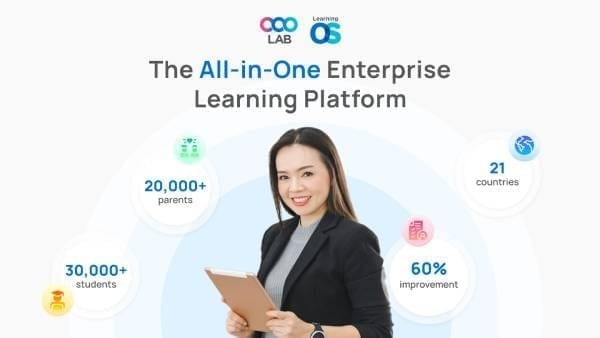

In today’s corporate world, Learning Management Systems (LMS) have become essential tools for delivering training, managing compliance, and tracking the development of employees. As organizations scale and evolve, the number of users on the LMS grows significantly, bringing with it a complex web of roles, responsibilities, and data sensitivities. Managing users and permissions in an Enterprise LMS (E-LMS) is crucial for ensuring security, compliance, and efficiency.
This blog explores best practices for managing users and permissions in an Enterprise LMS, providing insights on how organizations can navigate these challenges to maximize productivity and security.
In an enterprise setting, users of an LMS are not just learners but also include administrators, managers, instructors, content creators, and sometimes external partners or vendors. The diversity of these user roles brings complexity in assigning permissions, as each role often requires specific access to various functions within the LMS.
- Learners: Employees, partners, or clients who consume the learning content. They need access to courses, learning paths, and assessments but typically do not require editing rights.
- Instructors: Subject matter experts who deliver training, manage assessments, and may need access to reports related to their courses.
- Administrators: These users oversee the overall management of the LMS. Their responsibilities include user creation, role assignment, content management, and reporting.
- Managers: Supervisors or team leads who monitor the progress of learners under their hierarchy. They may need reporting access but not necessarily control over LMS-wide settings.
- Content Creators: Individuals responsible for creating and maintaining the learning content. They need access to tools for course creation and editing but not to user management functionalities.
>>> Read more: Common challenges when implementing an Enterprise LMS
>>> Read more: Steps to implement an Enterprise LMS
>>> Read more: Enterprise LMS - revolutionzing corporate training and development
>>> Read more: What is hybrid learning?
>>> Read more: Customization options for Enterprise LMS
Book Free Demo with us. Bring your Training and Learning to a new height with LearningOS.
Effective user management goes beyond simply creating accounts and assigning courses. In large organizations, managing users effectively can have a direct impact on:
- Security: With large-scale operations, the risk of data breaches or unauthorized access is higher. Role-based access control (RBAC) ensures that only authorized personnel have access to sensitive information.
- Compliance: Many organizations operate in regulated industries such as healthcare, finance, or manufacturing. Ensuring that the right people have access to the correct training and reports is critical to maintaining compliance.
- Efficiency: Poor user management leads to bottlenecks, confusion, and inefficiencies. Assigning the right permissions ensures smoother operations and reduces administrative overhead.
- Scalability: As the enterprise grows, the LMS must be capable of handling more users without compromising functionality or security. Well-defined user roles and permissions structures allow for easier scaling.
RBAC is a common approach to managing user permissions in an Enterprise LMS. With RBAC, users are assigned roles based on their function, and each role has a predefined set of permissions. This approach simplifies permission management and enhances security by ensuring that users only have access to the information and tools necessary for their job.
For example, an administrator might have full access to manage users, create courses, and run reports, while a learner might only have access to view and complete assigned courses.
In large enterprises, not all instructors or administrators need full access to all functionalities within the LMS. By creating granular permission levels, organizations can customize roles based on specific needs. For example, a course creator might have access to create and edit content but not to manage users or view company-wide reports.
Having flexible, granular permissions enables organizations to tightly control access, minimizing the potential for unauthorized use of sensitive data or system configurations.
Manually managing user enrollments and role assignments in an enterprise with hundreds or thousands of employees is not practical. Automation is key to scalability and efficiency. Many Enterprise LMS platforms offer integrations with Human Resources Information Systems (HRIS) or Active Directory (AD) to automatically sync user data, enroll employees in mandatory courses, and assign roles based on department, job title, or team.
By automating user management processes, organizations can ensure that new hires are enrolled in onboarding training, that employees who move departments receive relevant courses, and that learners who complete mandatory training can be removed from compliance lists.
SSO is an authentication method that allows users to log in to multiple applications, including the LMS, using one set of credentials. Implementing SSO not only simplifies the user experience but also enhances security by reducing the number of passwords users need to manage.
For LMS administrators, SSO can streamline user provisioning and deprovisioning, ensuring that when an employee leaves the organization or changes roles, their access to the LMS is immediately adjusted.
As organizations evolve, so do the roles and responsibilities of their employees. It is essential to regularly review and audit user permissions to ensure that they remain appropriate. Periodic reviews help organizations identify any redundant or excessive permissions that could pose a security risk.
Audits also help ensure that users no longer in the organization or those who have shifted roles do not retain unnecessary access to sensitive LMS functions. Many Enterprise LMS platforms offer built-in reporting tools for auditing permissions and user activities.
In enterprise environments, managing individual users can quickly become overwhelming. Group management features, where users are assigned to groups based on their role, department, or location, streamline user management. Administrators can then assign permissions, courses, and learning paths at the group level rather than the individual level.
For example, if an organization has a mandatory compliance training for its sales team, the administrator can assign the course to the entire "Sales" group rather than individually enrolling each sales employee.
It’s essential to provide training to LMS administrators and managers on how to manage users and permissions effectively. Without proper training, even the most sophisticated LMS tools can be underutilized or misused, leading to inefficiencies and security risks.
Regular training on how to assign roles, enroll users, and manage permissions will ensure that your LMS administrators are well-equipped to manage the system effectively.
Understanding user activities, course completions, and system access is critical for decision-making in enterprise environments. Modern Enterprise LMS platforms come equipped with reporting tools that allow administrators to track user behavior, compliance status, and permission audits.
These reports are not only useful for internal reviews but can also serve as documentation during external audits or compliance checks.

Book Free Demo with us. Bring your Training and Learning to a new height with LearningOS.
Managing users and permissions in an Enterprise LMS is a dynamic and ongoing process. With multiple roles, vast amounts of data, and the need for tight security, organizations must adopt a structured approach to user management. Leveraging tools like Role-Based Access Control, automation, SSO, and group management can help organizations manage their LMS effectively, ensuring compliance, security, and efficiency.
By following the best practices outlined above, enterprises can reduce administrative burden, protect sensitive data, and create a more streamlined learning environment.
At OOOLAB (pronounced 'uːlæb'), our mission is to make complex learning operations simple. We aim to positively impact the lives of over 1,000,000 learners and educators by the end of 2026.
OOOLAB's LearningOS provides educational institutions and corporate enterprises with an all-in-one solution to create and deliver engaging learning experiences.
We meet organizations' needs or support your growth. We provide undivided attention. We provide
Reach out to us at: Linkedin, FaceBook
FAQ
What are the main benefits of LearningOS
Our platform is easy to use and automates all aspects of your learning operations. It efficiently manages complex tasks, allowing you to concentrate on delivering exceptional learning experiences.
What main features does LearningOS offer?
Our all-in-one software solution combines a Content Management System, a Learning Management System, content authoring tools, and a mobile friendly Learner Portal.
Can your platform be used for corporate enterprises?
Absolutely! LearningOS is an Enterprise LMS is a great fit for corporate learning. In fact, we have clients with up to 700,000 employees using LearningOS! Upskill your workforce by creating and assigning interactive eLearning content while effortlessly tracking employee progress.
Who currently uses your platform?
Our platform is currently used by over 120,000+ learners, parents, and employees across 21 countries worldwide!
What types of content options are available on your platform?
We offer ready-to-go curriculums for various educational purposes or our expert design team can build a custom course for you. We can also upload your existing learning materials and enhance them digitally.
What is unique about LearningOS?
Our platform, designed by educators for educators, provides you with all the tools you need to scale. Build and promote your own hybrid and blended learning courses and save money on licensing fees by owning your own proprietary content.
How can I get started?
Schedule a meeting with our experts and we’ll talk about how our platform can address your unique challenges and help to grow your business.